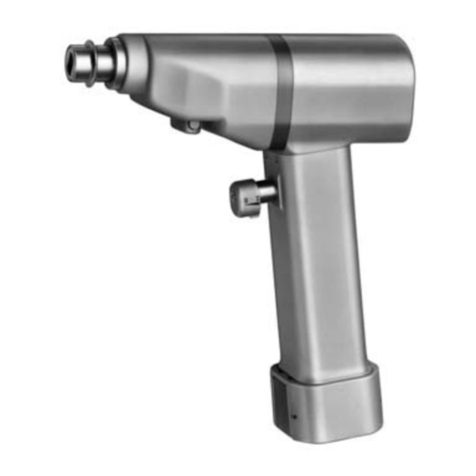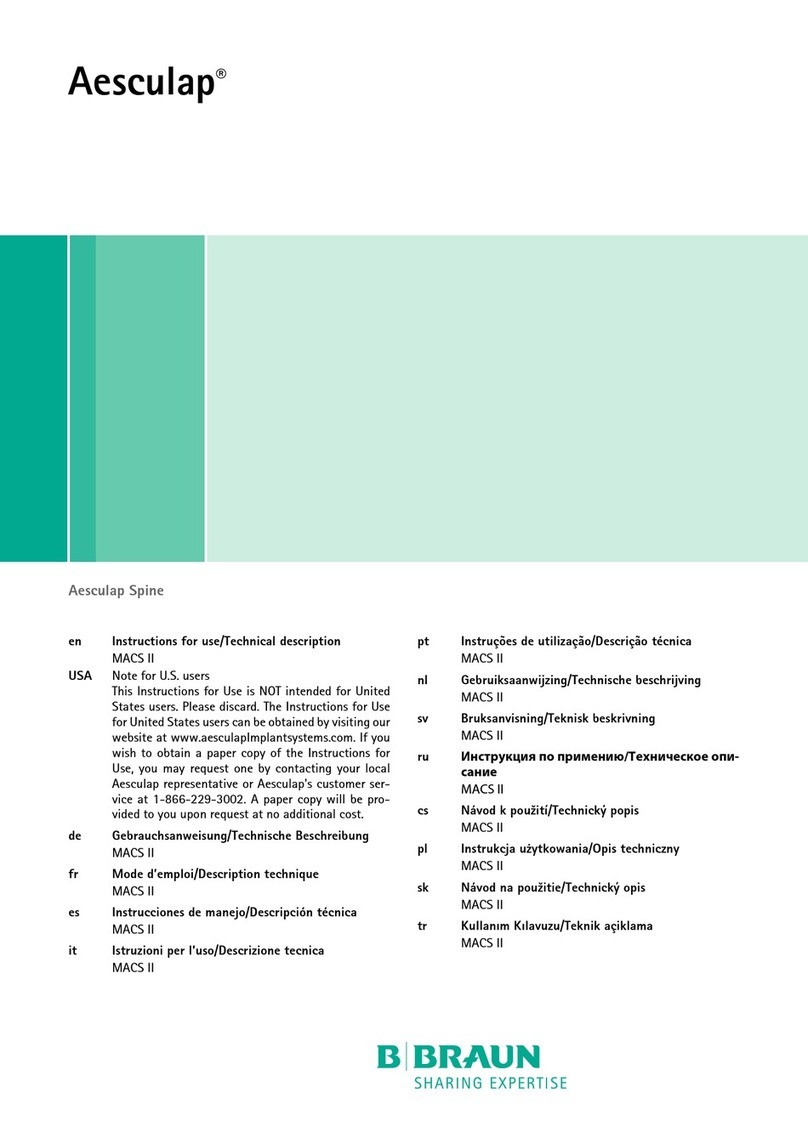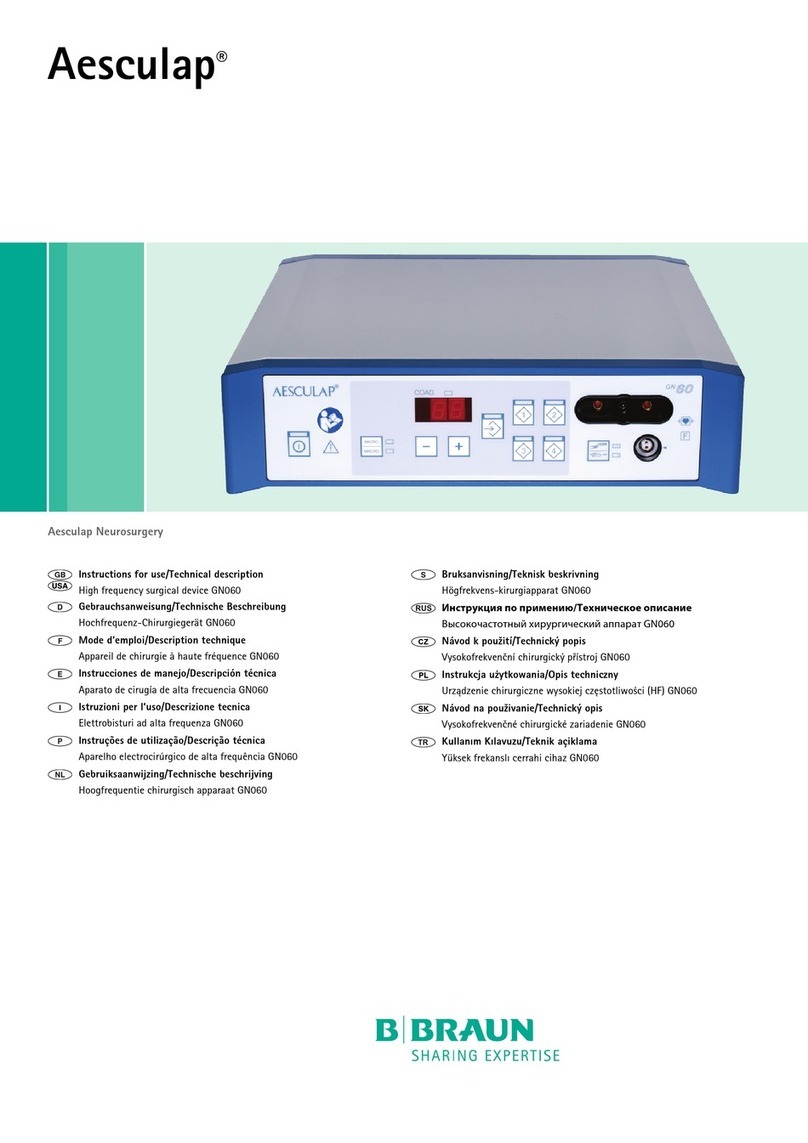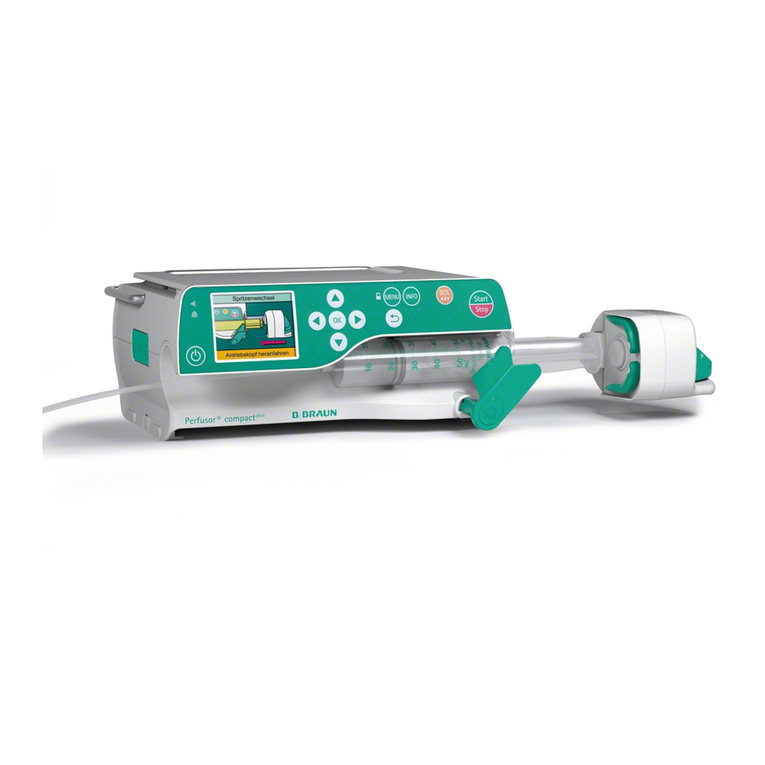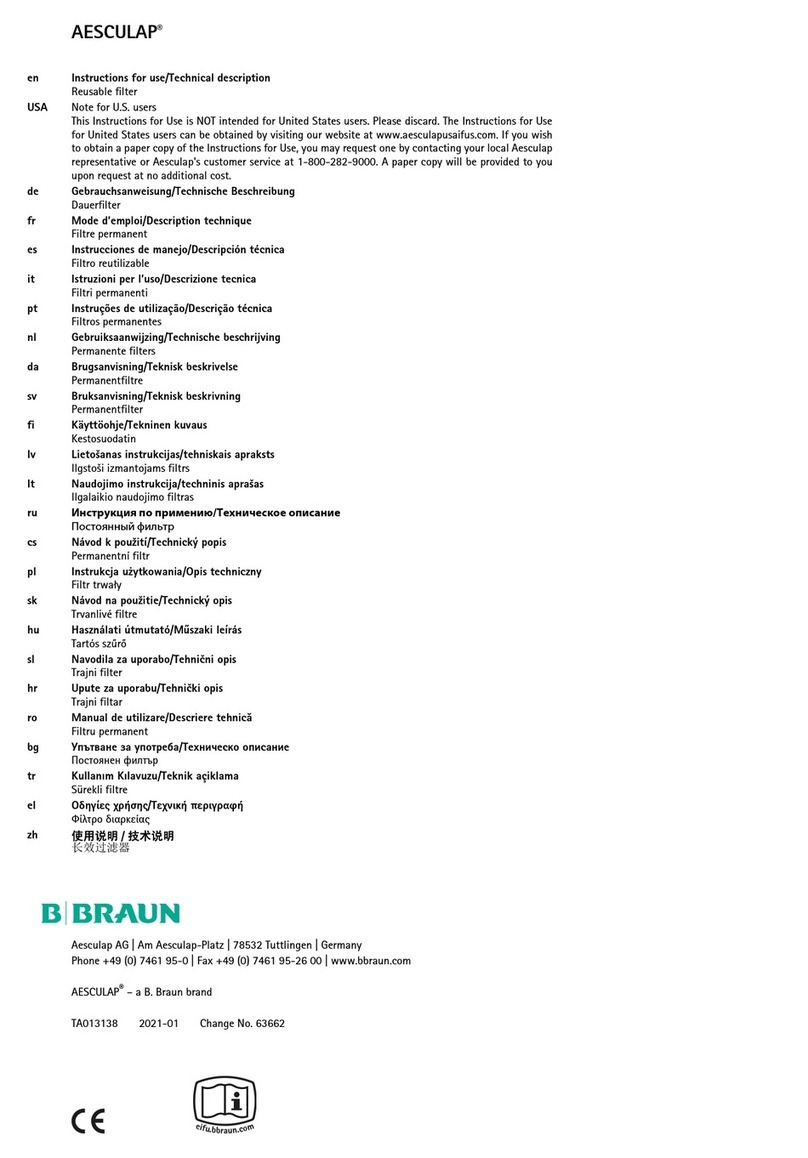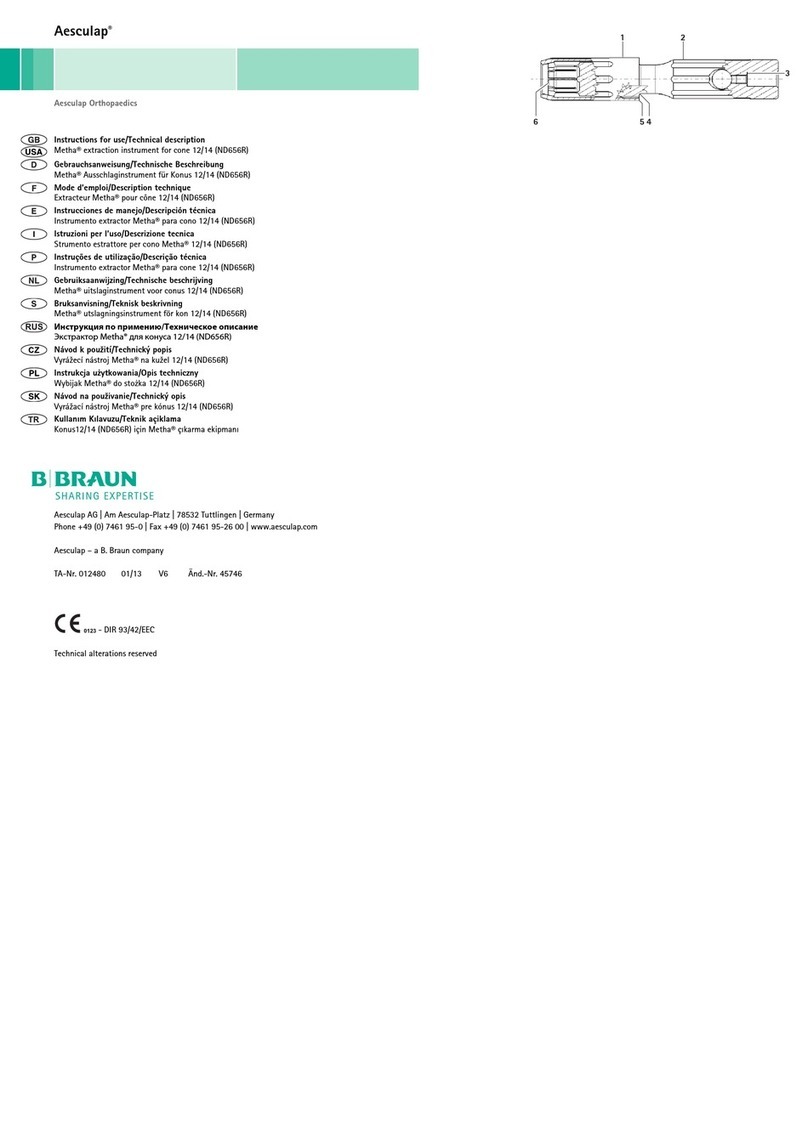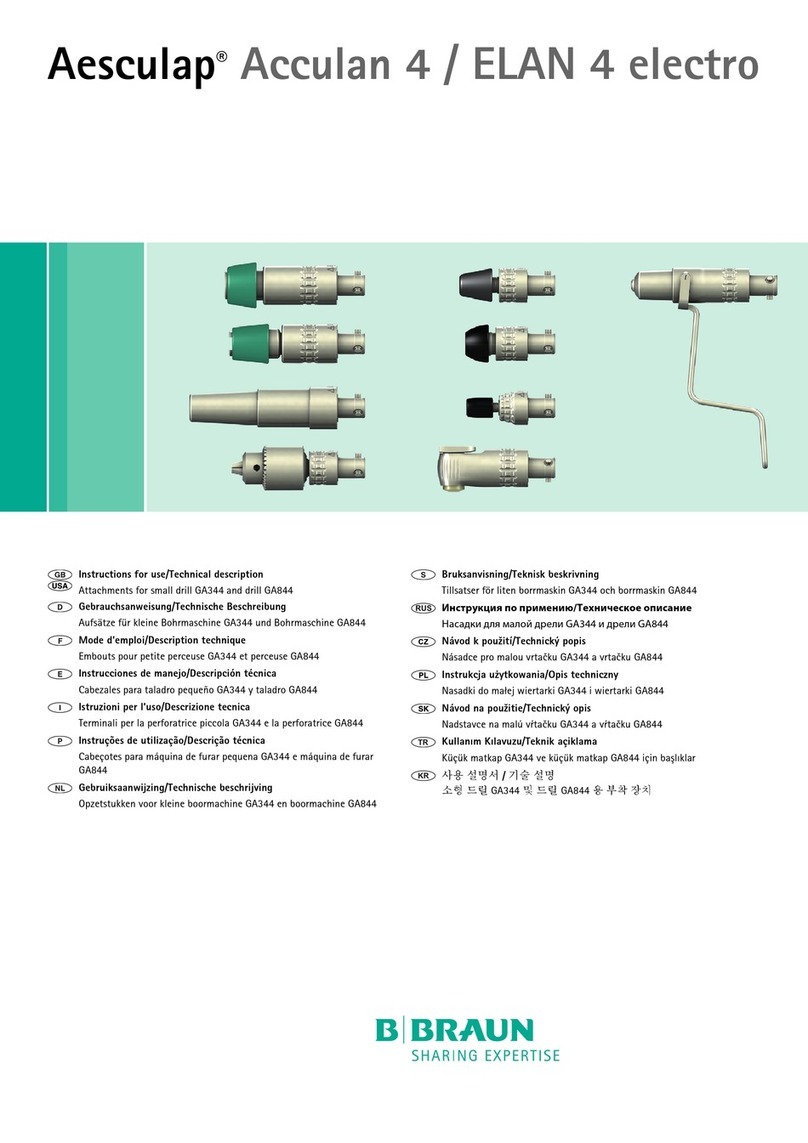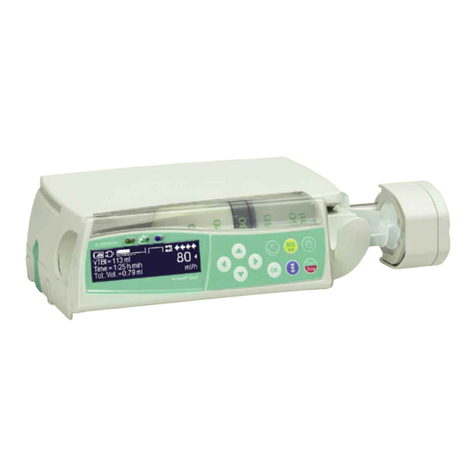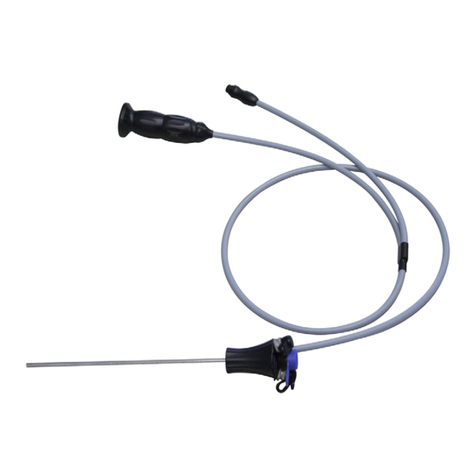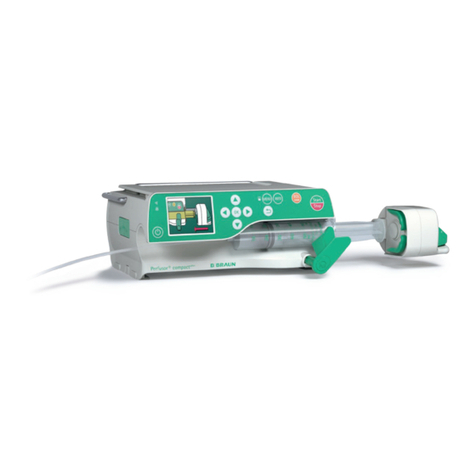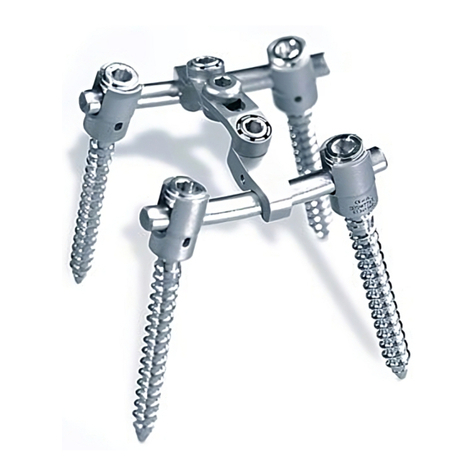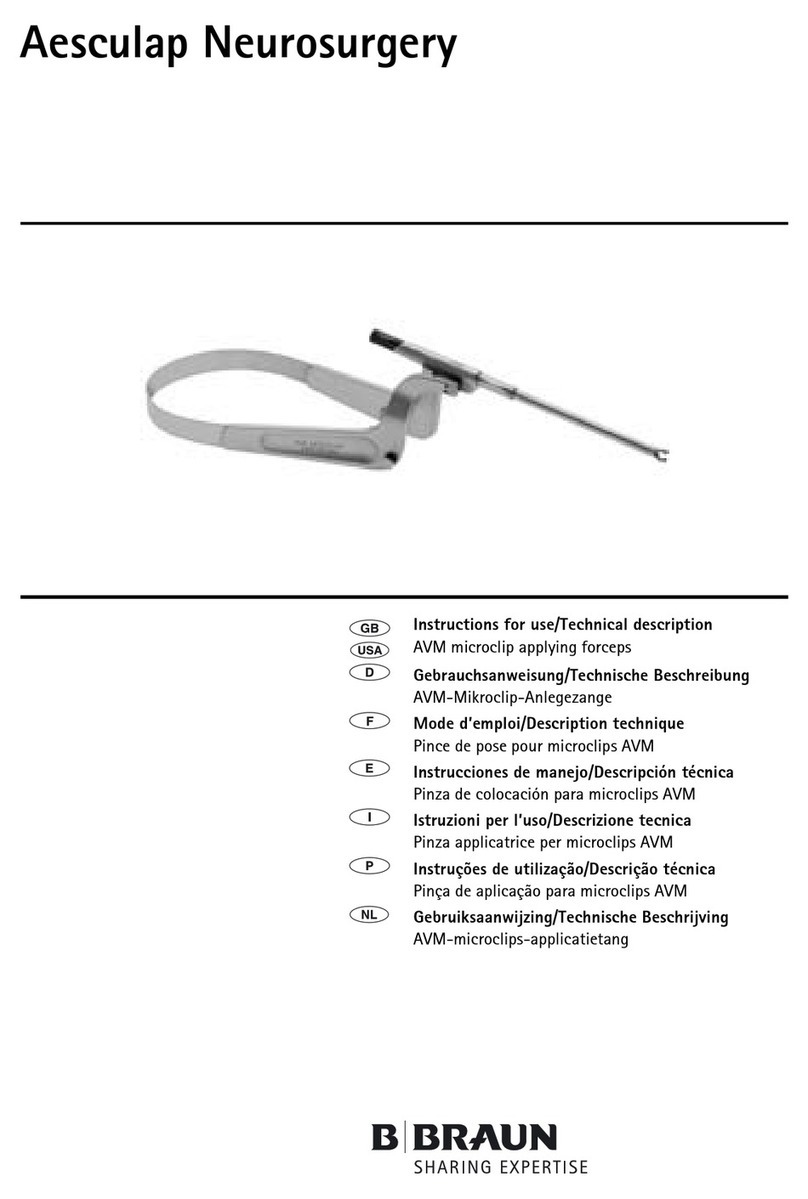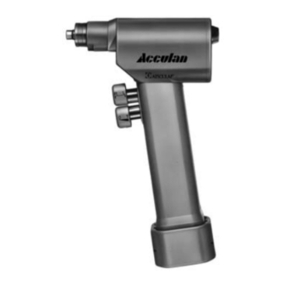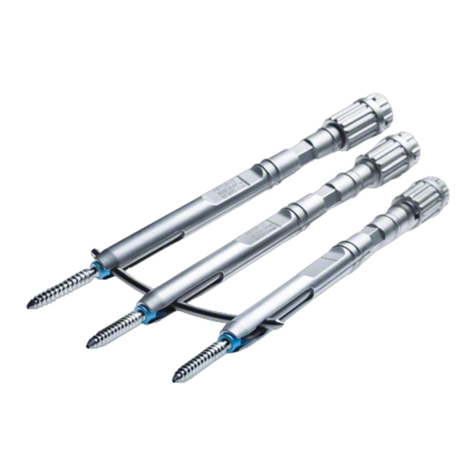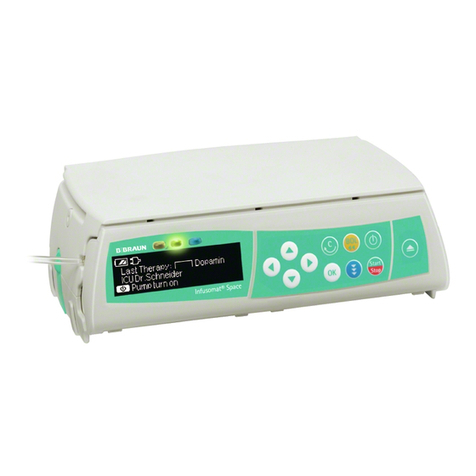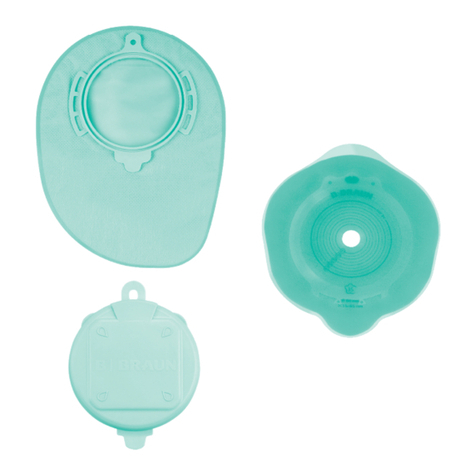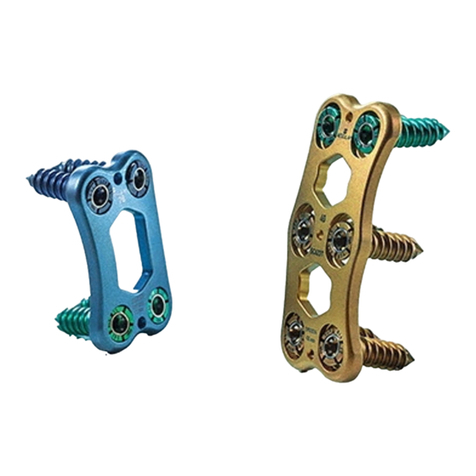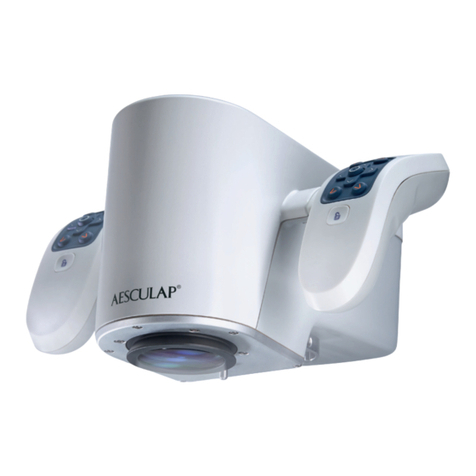
7
Validated processing procedure
Note
Observe all relevant national regulations and standards
with regard to processing.
Note
For patients with Creutzfeldt-Jakob disease (CJD),
suspected CJD or possible variants of CJD, observe the
relevant national regulations concerning the
reprocessing of the products.
Note
Mechanical processing should be preferred over
manual cleaning because of the better and more
reliable cleaning results of mechanical processing.
Note
Successful processing of this medical product can only
be ensured through a validated processing procedure.
The user/processor is responsible for the validation.
Due to process tolerances, manufacturer’s
specifications can only serve as guide values for the
processing procedures applied by the individual user.
Note
Up-to-date information on processing can be found on
the Aesculap Extranet at www.aesculap-extra.net
Single-use products
General notes
Encrusted or fixated residues from surgery can make
the cleaning process more difficult or ineffective, and
can cause corrosion of “stainless” steels. Consequently
the time interval between application and processing
should not exceed 6 h, and neither potentially fixating
pre-cleaning temperatures > 45 °C nor any fixating
disinfecting agents (active ingredient: aldehyde,
alcohol) should be used.
Excessive doses of neutralizers or basic detergents can
cause chemical deterioration and/or fading of the laser
engraving on stainless steel.
Residues containing chlorine or chlorides, as found e.g.
in surgical residues, tinctures, medicines, saline
solutions, service water used for cleaning, and in
cleaning/disinfecting agents, cause corrosion damage
(pitting, stress corrosion) and thereby destruction of
stainless steel products. To remove such residues, the
products must be rinsed sufficiently with fully
desalinated water and dried thoroughly.
Only use process chemicals recommended by the
chemicals’ manufacturers as effective cleaning/
disinfecting agents compatible with the materials used
in the respective product. Strictly observe all
application instructions, e.g. regarding temperatures,
concentrations, exposure times, etc. Failure to do so
can result in the following problems:
• Optical changes to the material, e.g. fading or
discoloration of titanium or aluminum. For
aluminum, the application/process solution only
needs to be of pH > 8 to cause visible surface
changes or
• Material damage, e.g. corrosion, cracks, fracturing,
premature aging or swelling.
• Do not use oxidizing process chemicals, which
could cause bleaching/layer loss of the product.
WARNING
Breakage of distraction screws/
offset distraction screws due to
reuse!
¾The distraction screws/offset
distraction screws are intended
for single use only.
CAUTION
Possible damage to or destruction
of products, due to processing!
Intended use: These products have
been designed for single use only.
¾Do not reprocess these products.
